The rise of film making in Tanzania
From Bongowood movies to Netflix offerings and wildlife documentaries, Tanzania is in the spotlight as a location for cinema
All photography by Brian Siambi
Mount Kilimanjaro sure knows how to tease an ending. Shrouded in mist, it offers only splinters of itself at a time. The mountain, also known as the ‘Roof of Africa’ and standing at 5,895 metres above sea level, asks its audience to imagine its summit long before the clouds part. Jagged rocklines and whispers of snow only enter the sky’s script at dawn. It’s no wonder grassroots film-makers in Tanzania are putting the country itself centre stage in their productions.
Tanzanian film-maker Jigar Ganatra revels in the mountain’s cinematic beauty every day. The volcano changed his career. It was during a climb to the summit in 2021 that the 26-year-old decided to start the African School of Storytelling (AFRISOS), as a vehicle to empower African documentary makers to preserve the natural and cultural heritage of their continent with all-expenses-paid film-making mentorships.
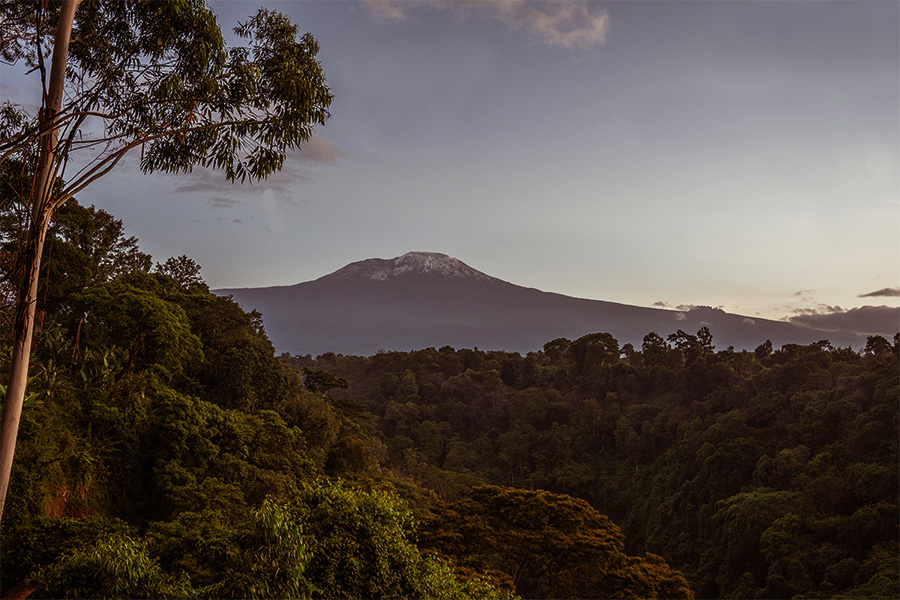
The mighty Mount Kilimanjaro

“It was such a cry I felt from local storytellers asking how to use cameras in compelling ways to be heard, but there was nothing out there for them,” says Ganatra, who is based in Arusha. “I believe Africa is the least exhausted place in the world in terms of storytelling. We haven’t been heard before, but now the world is really asking for us to share our voice.”
A quick Google search will tell you the Tanzanian film industry was established in 2001, with the rise of Bongowood, a wave of Swahili language films shot in Dar es Salaam. A lack of funding, access to affordable equipment and distribution limitations have proved frustrating for young film-makers, but they persisted in making low-budget films that went straight to DVD, but that won a cult following.
Now a wave of directors, writers and producers in the East African country are raising the bar. Netflix picked up homegrown films Binti (2021) and Nyara: The Kidnapping (2020) while director Amil Shivji’s 2021 film Vuta N’Kuvute (meaning ‘tug of war’ in Swahili) premiered at the Toronto International Film Festival. Meanwhile, Hollywood actor Idris Elba recently expressed interest in opening a film studio in the country.
As one of the most biodiverse film sets in the world, Tanzania boasts the Serengeti ancient coastal forests, mountain ecosystems and natural landmarks including Kilimanjaro as its own. And its cast is stellar: over 55,000 confirmed species, including a third of the total plant species in Africa. Its latent natural beauty needs no time in hair and make-up. But foreign film crews have typically used the country’s best angles and stories for western productions. Until now, that is.
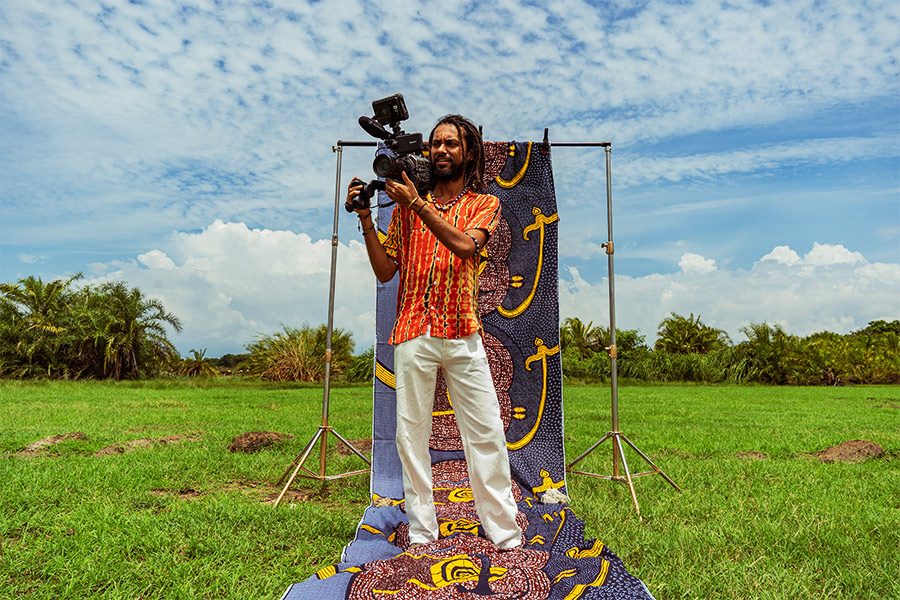
AFRISOS founder Jigar Ganatra is empowering African film-makers

Ganatra, who is currently developing his first feature-length film based on the hunter-gatherer Hadzabe tribe, is on a mission to empower indigenous voices. His upcoming AFRISOS project will see a collaboration with the Maasai community, shooting everyday scenes on the tribe’s smartphones. While Turtle Man, an AFRISOS-funded film about an indigenous conservationist who rescues turtles, won the Micro Movie category at the Jackson Wild 2022 World Wildlife Awards.
Ganatra regularly borrows a tripod or boom mic from wildlife cinematographer Hans Cosmas Ngoteya at his Ngoteya Wild studios. Ngoteya discovered the power of film while working as a conservation educator and a National Geographic Explorer. “Almost half of our country is protected, but for so long we’ve been told it’s the place of white people to film our wildlife,” he says. “I want to highlight what local Tanzanians are doing in the wildlife industry and the careers available to them.”
Much like AFRISOS, Ngoteya designs his productions to reach locals first. There isn’t a strong cinema culture in Tanzania, so the films are made in Swahili language with English subtitles and consumed online.
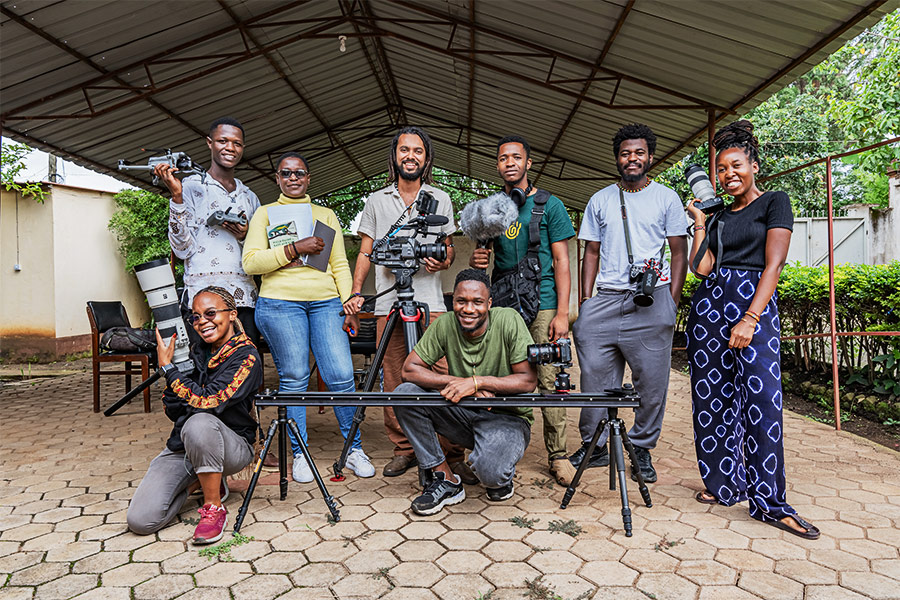
Ganatra with his AFRISOS team in Arusha

Turning away from the leafy wildlife studios of Arusha, in the coastal city of Dar es Salaam film-makers Angela and Alinda Ruhinda, co-founders of Black Unicorn Studios, produced Binti, the first-ever Tanzanian film to land on Netflix. In the opening minutes the sisters dunk us into Dar with motifs of chapatis, skyscrapers and beaches. But the film, meaning ‘daughter’ in Swahili, holds deep meaning. “Binti shows us the interior lives of African women; as flawed women with agency,” says Angela Ruhinda. “It’s our message telling them that we see them, we hear them and we love them.”
“We have so much richness in Tanzania ... We have a plethora of stories here which haven’t been told to the world that are unique, authentic and diverse”
The original script, written by Maria Shoo, was selected as part of a competition the sisters launched to broaden their reach of Tanzanian stories, while many of the film’s actors were discovered through open casting. “We don’t believe in gatekeeping opportunities,” adds Ruhinda. “There’s a lot of promise here in Tanzania.”
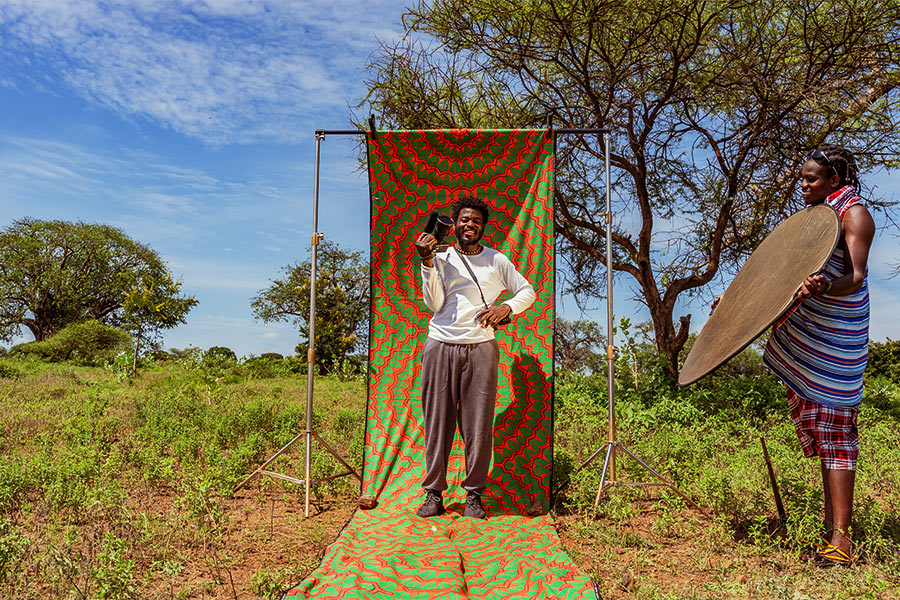
Michael Ndosi has gone from tour guide to documentary maker

A breath into the Indian Ocean sits Zanzibar, the semi-autonomous archipelago best known for its spines of white sand and glassy waters. But these qualities rarely feature in Vuta N’Kuvute, a film about love and resistance with a screenplay based on a Swahili novel of the same name, which captures an era omitted from Tanzanian school curriculums today. Shivji’s grandparents were Zanzibari and he spent two years on the island researching the film. Music bolsters his storytelling – the lilting poetry of taarab, a romantic melding of Swahili words – but there are no picture postcard impressions here.
“This island is picturesque, but the only time you see a beach in the film is when the main character is trying to escape from prison,” says director Shivji, who rejected distributors’ demands to make the film ‘more English’ to boost popularity. “It wasn’t hard to say no. My goal for this film was to reach schools.”
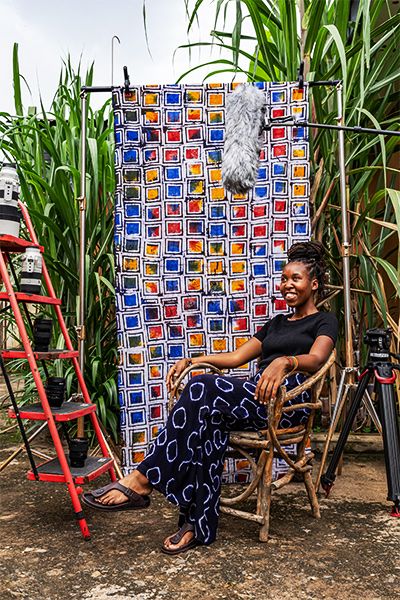
Film-maker Lilian Anold was the first AFRISOS mentee
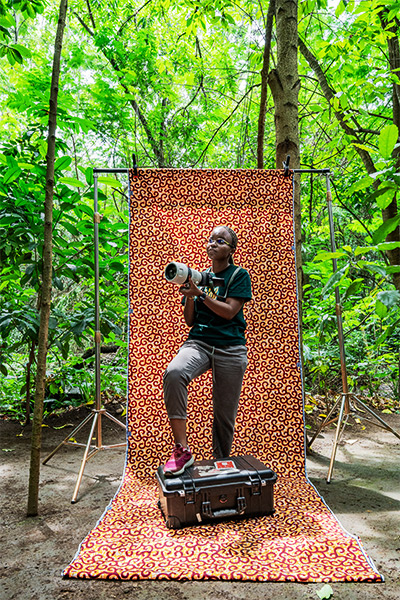
Lauraclara Cosmas recently partnered with the BBC on a wildlife documentary
A film’s success on the international festival circuit is often measured by the length of its standing ovation, but Tanzanians interact in real time. “When Vuta aired to 2,000 people in Zanzibar’s Stone Town they were all shouting at the screen, yelling at the main characters,” recalls Shivji. “After the film, school students eagerly debated a history they’ve never been taught. Finally they got to see a Bongo movie that was shot well and asked something of them.”
Asked what their hopes for cinema in Tanzania are, the Ruhinda sisters say they want to see more Africans at decision-making-level globally. Ngoteya wants more Tanzanian writers, while Shivji yearns for film-makers to embrace their stories honestly. AFRISOS offers mentorships in everything from wildlife and cultural heritage filming, to shooting underwater and at altitude. But Ganatra rues the fact that many of his mentees lack a sense of their own value as storytellers. “I ask them, ‘Why?’ We have so much richness in Tanzania. We have 120 tribes, each with their own stories, languages and connection to the natural world. We have a plethora of stories here which haven’t been told to the world that are unique, authentic and diverse.”

Ganatra is keen to amplify Tanzania’s indigenous voices

His alumni are already getting noticed in the film industry. Take Lilian Anold, the first ever AFRISOS mentee. She initially felt, as a female, that film-making “wasn’t her world” but now the 32-year-old is working on wildlife documentaries all over the continent. Lauraclara Cosmas, who didn’t know how to use a camera before her mentorship began, recently partnered with the BBC in Zanzibar to document the female-led sea-sponge famine project. And former tour guide Michael Ndosi, who used to piece together stills snapped on broken phone lenses, has documented the arrival of high-speed internet on Kilimanjaro’s summit and an east-to-west crossing of the Serengeti in a hot air balloon. Asked what AFRISOS means to him, he says “that it’s possible”.
The overarching view is that this is just the beginning. In June, Wildscreen Festival Tanzania launches in Arusha. In partnership with the BBC Natural History Unit and AFRISOS, the festival will bring together over 350 documentary markers.
Asked about his role in nurturing the next generation of grassroots film-makers, Ganatra compares the challenge to climbing Kilimanjaro. “There are so many times when your body isn’t having it anymore, but you keep going,” he says. “For me, the Roof of Africa represents the highest point we can go as Africans. It’s about making high-quality films that help share the glory of what it means to be African to the world.”
Keen for more on-screen endeavours? Find out how Atlanta, Georgia became ‘The Hollywood of the South’.
Want more Tanzania? Read about how Zanzibar is becoming a sustainable tourism hotspot.